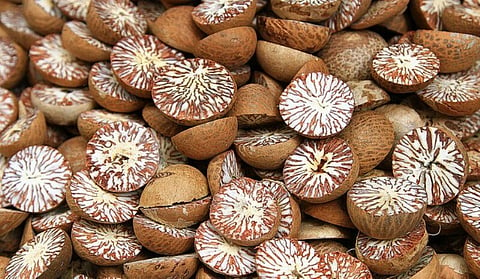
- Home
- Live Blog
- Breaking News
- Top Headlines
- Cities
- NE News
- Sentinel Media
- Sports
- Education
- Jobs

STAFF REPORTER
GUWAHATI: Burmese supari (betel nut) glutting the Indian market and beating the local varieties in the price war often hit headlines. What is this ‘shady business’ all about? To cut a long story short, it can be said as ‘indigenization of foreign supari’ i.e., selling foreign supari in the market in India by branding them as local varieties for ‘maximum profit’.
This is an unscrupulous practice. Foreign supari obtained from Myanmar, Thailand etc is cheaper than the local varieties. A kg of Burmese supari can be bought at source at Rs 90-150 as against Rs 250-280 a kg of local ones. This vast difference in the priceline tempts unscrupulous supari traders to show foreign supari as Indian varieties, and they get it done.
According to a source in the Customs department, the ocular difference between foreign supari and their local counterparts is their respective hues – while the inside of a foreign supari has a whitish hue, the inside of a local variety has a reddish hue. Of course, the local varieties have a better taste than their foreign counterparts. Unscrupulous traders use colours to give Burmese supari the reddish hue, and brand it as one of the local supari varieties.
According to a supari trader, the four local varieties of supari – faali (supari cut into two equal halves), goota (whole), kaaturi (boiled and dried up in whole) and kaapla (the best variety sold boiled). A kg of kaapla is sold at Rs 300-400, the trader said.
The trader has further said that foreign supari badly beats the local ones in the priceline. “Earlier we did cater to the supari needs in UP, West Bengal etc. However, now our supply there has fallen drastically. Burmese supari has already glutted those markets,” he said.